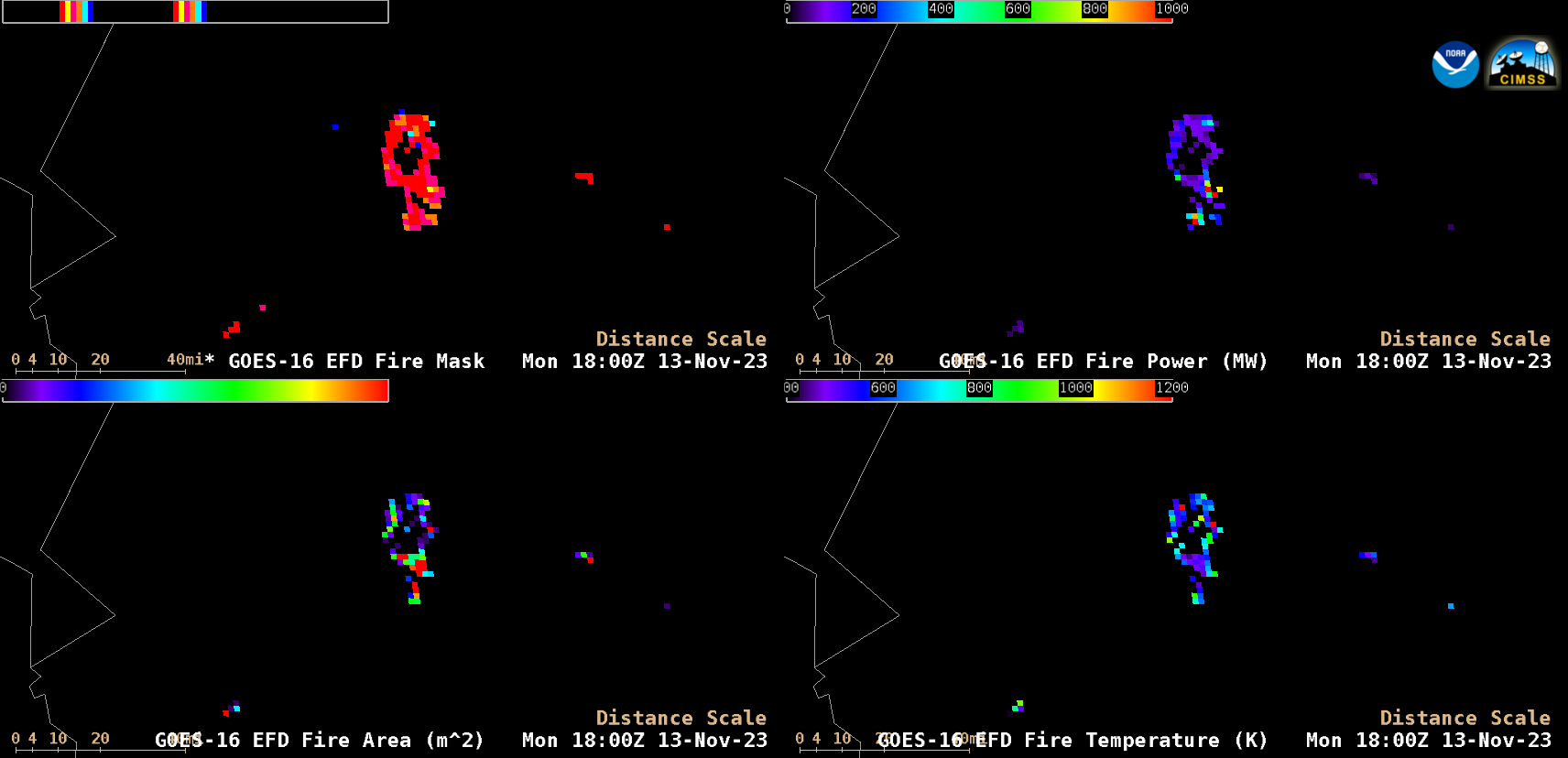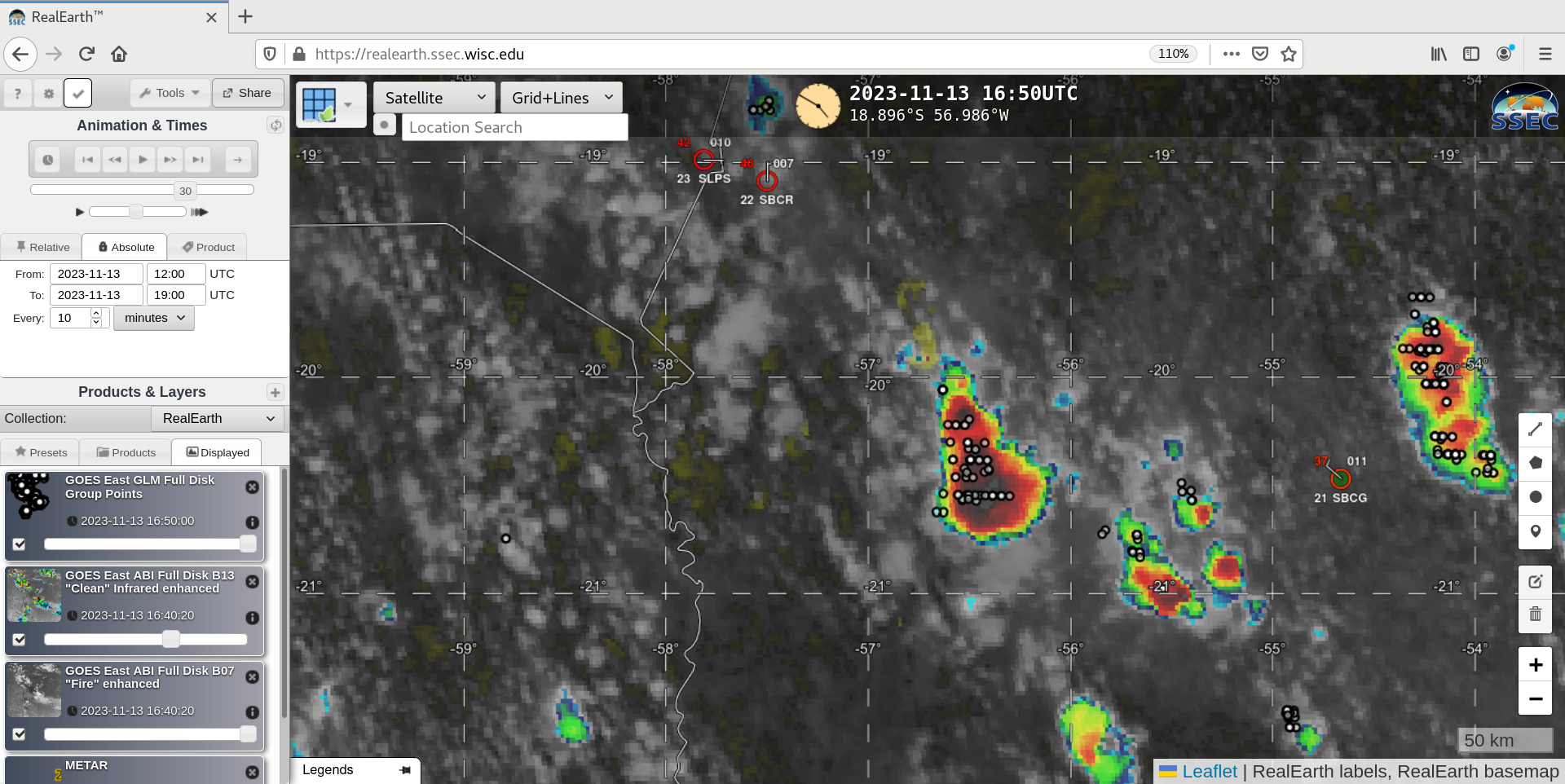Pyrocumulonimbus clouds in Brazil

GOES-16 “Red” Visible (0.64 µm, left), Shortwave Infrared (3.9 µm, center) and “Clean” Infrared Window (10.3 µm, right) images, from 1200 UTC to 1900 UTC on 13 November [click to play animated GIF | MP4]

GOES-16 Fire Mask (top left), Fire Power (top right), Fire Area (bottom left) and Fire Temperature (bottom right) derived products [click to play animated GIF | MP4]

GOES-16 Fire Mask derived product [click to play animated GIF | MP4]

Blend of GOES-16 Shortwave Infrared (3.9 µm) and “Clean” Infrared Window (10.3 µm) images, with an overlay of GLM Group Points, from 1200 UTC to 1900 UTC on 13 November [click to play animated GIF | MP4]

